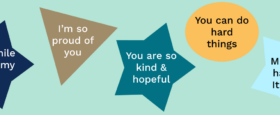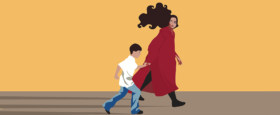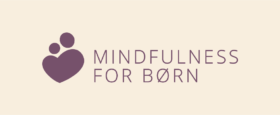Understand your child’s diagnosis: It’s not a disease.
After your child’s diagnosis he or she might encounter several misconceptions about their diagnosis. That’s why both you and your child should acquire knowledge of what a diagnose is and more importantly: what a diagnose isn’t.
Many people think that a diagnosis equals being sick, but a diagnosis is not a sickness. Instead a diagnosis is a term for identifying a group of symptoms that are linked to the problem. It does not unravel the cause of the problem which is why you could say that a diagnosis simplifies reality.
Diagnoses is not an unambiguous truth about the human quite the opposite – a diagnosis can be very elastic.
We experience diagnoses very different
Use your child’s diagnosis as a tool – it does not provide you with an ambiguous truth about your child’s health. A diagnose is broadly based on signs and symptoms which varies a lot from person to person.
Your child and another person with the same diagnosis may require different levels of care and their experience can be very different from one another. For some the diagnose could cause a lot of discomfort which is not the case for others and that is why it is very important to distinguish between the diagnosis and the disorder.
Humans and diagnosis differ from one another
Understanding that your child isn’t their diagnosis is very important. The diagnose describes and identifies the troubles your child is going through but it does not describe or identify the person.
Diagnoses does not reveal anything about the foundations of the problem – only something about the symptoms your child was showing at the time of the examination. The child is suffering from the diagnosis as long as there are any symptoms, and when the symptoms are gone so is the diagnosis. That’s why a diagnosis doesn’t necessarily mean a long-term illness.
Since a diagnosis only is a classification for a group of symptoms, it only describes a rather small part of the human being. If you want to understand and help a human being you must acquire a lot more knowledge about the person than the information about their diagnosis.
You have to know the person as an entity – gather knowledge about their history and their conditions in life. A psychiatric diagnosis could overshadow the person behind the diagnose which is an unfortunate misunderstanding.
The two systems of psychiatric classification
There are two widely established systems of classifications systems:
International Classification of Diseases (ICD), issued by WHO, and Diagnostic and Statistical Manual of Mental Disorder (DSM), issued by American Psychiatric Association.
Developing and improving ICD and DSM is still an on-going process. Together they reach global dimensions which enables international communication and research. The most recent examples are ICD-11 and DSM-5.
The classification system DMS is primarily used in the United States, Canada and Australia. In the United States DMS is used as a universal authority for psychiatric diagnosis, and treatment recommendations are often determined by applying DSM-classifications.
The classification system ICD is used in Europe and ICD-11 is Denmark’s official classification, but similar to many of the other countries, we prefer using the DSM-classification system for research.








